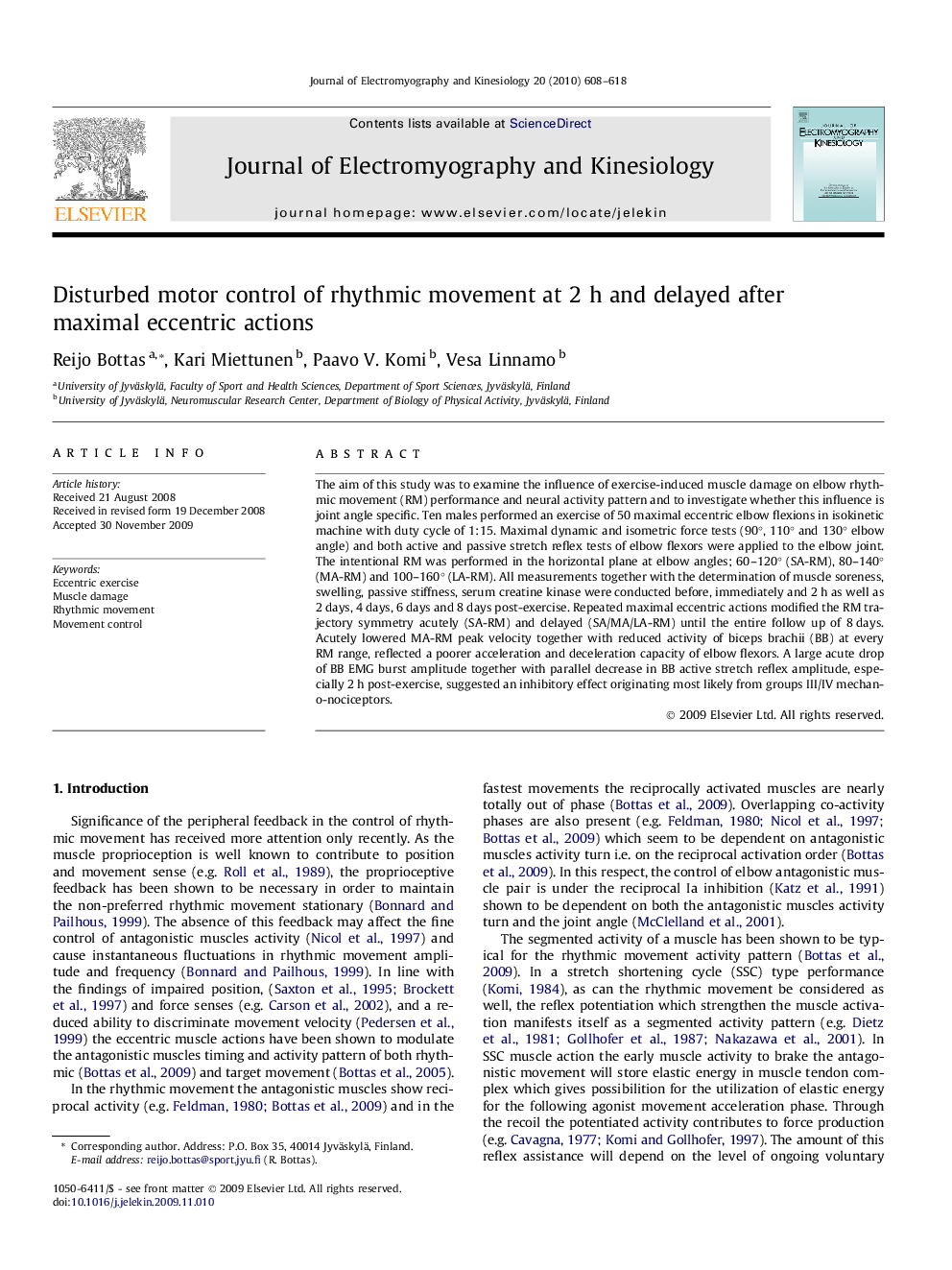| Article ID | Journal | Published Year | Pages | File Type |
|---|---|---|---|---|
| 4065158 | Journal of Electromyography and Kinesiology | 2010 | 11 Pages |
The aim of this study was to examine the influence of exercise-induced muscle damage on elbow rhythmic movement (RM) performance and neural activity pattern and to investigate whether this influence is joint angle specific. Ten males performed an exercise of 50 maximal eccentric elbow flexions in isokinetic machine with duty cycle of 1:15. Maximal dynamic and isometric force tests (90°, 110° and 130° elbow angle) and both active and passive stretch reflex tests of elbow flexors were applied to the elbow joint. The intentional RM was performed in the horizontal plane at elbow angles; 60–120° (SA-RM), 80–140° (MA-RM) and 100–160° (LA-RM). All measurements together with the determination of muscle soreness, swelling, passive stiffness, serum creatine kinase were conducted before, immediately and 2 h as well as 2 days, 4 days, 6 days and 8 days post-exercise. Repeated maximal eccentric actions modified the RM trajectory symmetry acutely (SA-RM) and delayed (SA/MA/LA-RM) until the entire follow up of 8 days. Acutely lowered MA-RM peak velocity together with reduced activity of biceps brachii (BB) at every RM range, reflected a poorer acceleration and deceleration capacity of elbow flexors. A large acute drop of BB EMG burst amplitude together with parallel decrease in BB active stretch reflex amplitude, especially 2 h post-exercise, suggested an inhibitory effect originating most likely from groups III/IV mechano-nociceptors.
